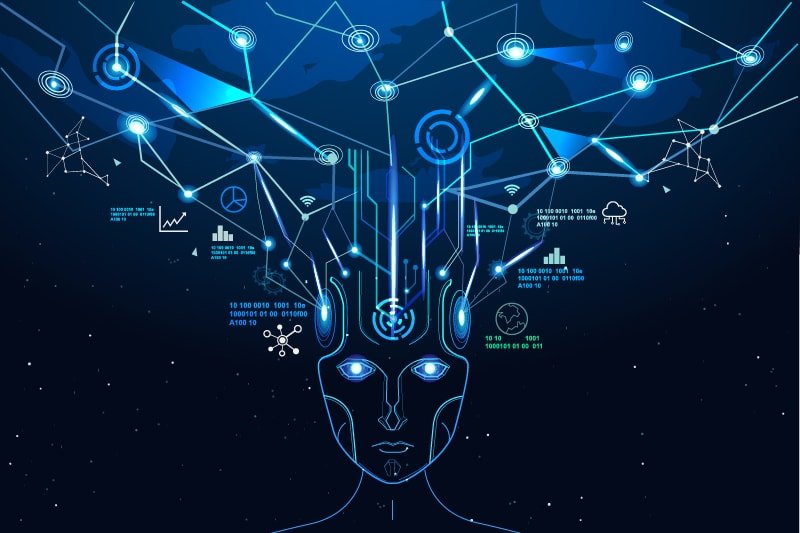Imagine waking up one morning to your dog’s collar lighting up and displaying, “I’m hungry!” Or maybe your cat’s camera notifies you with a soft chime: “Play with me!” It sounds like something pulled straight from a science fiction story, but the idea of decoding animal language with technology is no longer just a fantasy. With rapid advances in smart collars, petcams, and artificial intelligence, we’re standing at the edge of a breakthrough that could forever change how we connect with the animals we love. It’s inspiring, a bit surreal, and potentially revolutionary for both science and the soul.
The Dream of Animal-Human Communication
For centuries, humans have yearned to break the communication barrier with animals. From ancient myths about talking beasts to modern cartoons, the idea has always captured our imagination. Now, technology may finally help us understand what our pets are trying to say. The question isn’t just “Can we talk to animals?”—it’s “What would we discover if we could?” This dream fuels research and innovation, blending heartfelt curiosity with the ambition to bridge the gap between species. It’s no wonder pet lovers everywhere are eager to see what comes next.
How Smart Collars Work: Beyond GPS and Activity
Smart collars started as simple tracking devices, but today’s versions are much more sophisticated. They collect data not just about a pet’s location, but also heart rate, body temperature, movement patterns, and even vocalizations. Tiny microphones and accelerometers tucked inside these collars can capture everything from a dog’s bark to a cat’s purr. When this information is analyzed with machine learning, patterns start to emerge—patterns that might just reveal a language all their own. It’s a bit like having a fitness tracker that listens to you and tries to understand you, too.
The Rise of Petcams: Watching and Listening in Real Time
Petcams have become household staples for animal lovers wanting to check in on furry friends while away. But modern petcams do more than just stream a video feed—they record audio, detect movement, and some even respond to animal noises. Imagine a camera that alerts you when your dog is whining at the door or when your cat is meowing in distress. These devices are being used not only for entertainment but also as scientific tools, gathering valuable data for researchers eager to decode animal signals. The humble petcam is fast becoming a silent translator in our homes.
Artificial Intelligence: The Brain Behind the Tech

Artificial intelligence is the magic ingredient that promises to transform raw data into meaningful insights. By analyzing thousands of hours of pet sounds and associating them with behaviors or circumstances, AI can begin to map out what certain barks, meows, or body movements might mean. For example, a sharp bark paired with pacing near the door could signal “I need to go outside.” The more data AI collects, the smarter it gets—potentially building a dictionary of animal expressions. It’s as if we’re slowly piecing together a Rosetta Stone for animal communication.
Decoding Barks, Meows, and More: Early Breakthroughs
Researchers have already started making progress in decoding animal sounds. Studies show that certain barks or meows consistently occur in specific situations, like hunger or excitement. Some smart collars now claim to detect emotions such as stress or happiness based on vocal patterns and physiological data. For example, a high-pitched, repetitive bark might signal anxiety, while a drawn-out meow could indicate loneliness. Each discovery is a tiny step closer to a world where we don’t just guess what our pets want—we know.
The Science of Animal Emotions
Understanding animal language is about more than just words—it’s about emotions. Animals express feelings through tone, pitch, and rhythm, much like humans do. Smart technology can track these subtle changes and help us interpret them. For instance, a wagging tail combined with a happy bark could signal excitement, while a low growl and stiff posture might mean fear. Scientists are now using technology to map these emotional cues, giving us a deeper, more empathetic understanding of our animal companions.
Body Language: The Silent Communication
Not all communication is vocal. Animals use their bodies to express themselves—think of a cat’s arched back or a dog’s playful bow. Smart collars equipped with motion sensors and accelerometers can track these movements and provide clues about what animals are feeling or trying to say. For example, repeated pawing at a door could mean “let me out,” while circling a food bowl might mean “feed me.” Capturing and analyzing these signals is crucial for building a complete picture of animal language.
Practical Uses: What Pet Owners Can Expect
Imagine knowing exactly when your pet is feeling anxious, hungry, or bored. With advanced smart collars and petcams, this could soon be a reality. Owners might receive notifications like “Your dog needs a walk” or “Your cat wants attention.” This technology can make pet care more responsive and compassionate, reducing misunderstandings and improving animal welfare. For busy families or those with elderly pets, these insights could be life-changing—catching health issues early or preventing unwanted behaviors before they start.
Animal Welfare and Veterinary Medicine

Smart technology isn’t just about convenience—it could transform animal welfare and veterinary care. Early detection of pain, stress, or illness through changes in vocalizations or activity patterns could lead to faster treatment. Vets might use data from smart collars to diagnose conditions that are hard to spot with the naked eye. For shelter animals, understanding behavior and emotional state could help match pets with the right families. Technology isn’t just giving animals a voice—it’s giving them better lives.
From Wolves to Whales: Expanding Beyond Pets
The promise of decoding animal language doesn’t stop with cats and dogs. Researchers are applying similar technologies to wild animals, from wolves in the forest to whales in the ocean. Collars and tags can record vocalizations, heart rates, and movement patterns, offering insights into how animals interact, hunt, and care for their young. By understanding the communication of wild species, we can better protect them and their habitats. The ripple effects could be enormous, changing the way we approach conservation.
Challenges and Limitations: Lost in Translation?
Even with all this dazzling technology, there are serious challenges. Animal communication is complex and context-dependent—one bark might mean “hello” in one situation and “back off” in another. Machine learning can struggle with these nuances, and there’s always the danger of misinterpretation. Plus, each species—and even each individual—may have unique ways of expressing themselves. Researchers must tread carefully to avoid oversimplifying or anthropomorphizing animal signals. Decoding animal language isn’t just about translating sounds; it’s about understanding a whole new way of perceiving the world.
Ethical Questions: Should We Listen In?

As we gain the power to interpret animal language, ethical questions arise. Should we always listen in, or do animals have the right to privacy? Could constant monitoring stress them out or change their natural behaviors? And what happens if we discover things we’d rather not know—like signs of distress or unhappiness? Technology brings responsibility, and we must balance curiosity with compassion. The goal should be a partnership, not surveillance, ensuring that animals benefit just as much as humans.
Training the Next Generation of Translators
Building effective animal language translators isn’t just about software—it’s about collaboration. Scientists, veterinarians, animal trainers, and pet owners all have a role to play. By sharing observations and data, we can refine algorithms and teach AI to recognize subtle cues. Think of it as a team effort, where every bark, meow, or tail wag adds a piece to the puzzle. The more diverse the data, the better our chances of truly decoding what animals are saying.
Learning from the Wild: Field Studies and Conservation
Field researchers are already using smart collars and acoustic sensors to study animal communication in the wild. These tools reveal how elephants warn each other of danger, how dolphins coordinate hunts, and how birds sing to attract mates. By decoding these signals, scientists can better protect endangered species and understand ecosystem dynamics. The information gathered in the wild often circles back to benefit our pets at home, creating a virtuous cycle of discovery.
Public Fascination and Pop Culture

The idea of talking to animals has always fascinated the public. Movies, TV shows, and books explore what it would be like to share a conversation with our furry or feathered friends. Now, with smart collars and petcams, we’re one step closer to making fiction reality. Social media is abuzz with videos of pets “talking” through buttons or apps, capturing hearts and imaginations worldwide. This popular enthusiasm helps drive innovation and support for scientific research.
Personal Stories: The Emotional Connection
For many pet owners, technology has already deepened their bond with their animals. Imagine the relief of knowing your anxious dog is calm while you’re at work, or the joy of receiving a video of your cat “asking” for a treat. These small moments create a sense of connection and understanding that goes beyond words. Technology is turning the age-old question, “What is my pet thinking?” into something we might soon be able to answer.
The Role of Funding and Innovation

Progress in decoding animal language depends on investment and creativity. Startups and tech giants alike are racing to develop smarter devices, while universities and nonprofits push the boundaries of scientific understanding. Grants, donations, and public interest all fuel this movement. Every new breakthrough brings us closer to a world where animals and humans can share more than just companionship—they can share meaning.
Looking Forward: What’s Next on the Horizon?
The journey to decode animal language is just beginning. As smart collars and petcams become more advanced, and as AI grows more sophisticated, we may soon witness astonishing breakthroughs. There could come a day when your pet’s collar lights up with a message, or when a shelter dog “tells” you how it’s feeling. The possibilities stretch as far as our imagination and compassion will allow.




